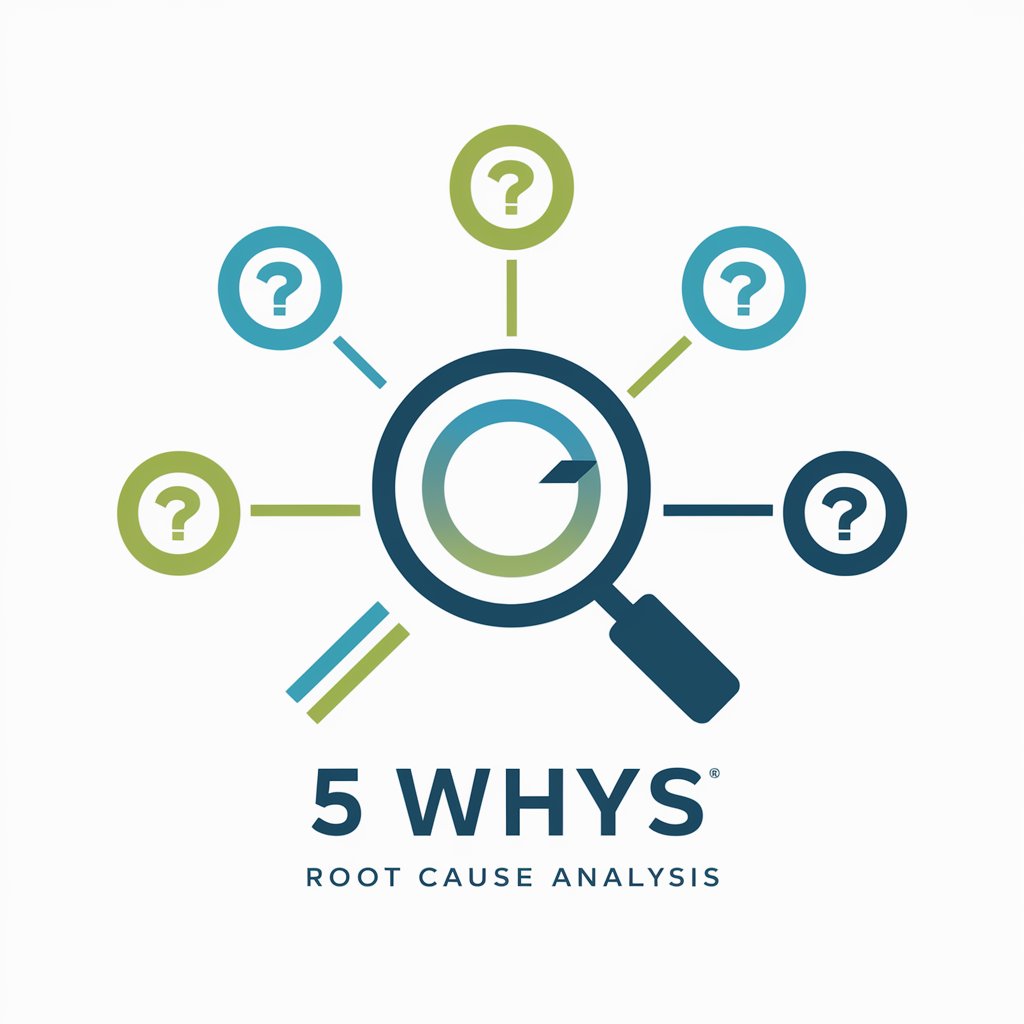
❓ Five Whys Problem Investigator (5.0⭐) - Root Cause Analysis Tool

Welcome! Let's uncover the root causes together.
Uncover deep insights with AI-powered analysis
Why did the issue occur initially?
What caused the first problem?
Why did the system fail to respond as expected?
What triggered the malfunction in the first place?
Get Embed Code
❓ Five Whys Problem Investigator (5.0⭐) Overview
The ❓ Five Whys Problem Investigator (5.0⭐) is an expert system designed to utilize the 'Five Whys' interrogative technique, a methodology developed by Taiichi Ohno for Toyota Motor Corporation. This approach aims at identifying the root causes of problems by asking 'Why?' five times, or as many times as necessary, to move beyond symptoms and reach the underlying issues. Through iterative questioning, it explores cause-and-effect relationships that lead to the core problem, enabling users to devise effective corrective actions. This technique is particularly valuable in complex scenarios where the initial problem statement might be symptomatic of deeper issues. Powered by ChatGPT-4o。

Key Functions and Use Cases
Root Cause Analysis
Example
Identifying why a manufacturing line is experiencing increased downtime.
Scenario
A factory's production line has suddenly started to underperform, leading to significant delays. By applying the Five Whys technique, the investigation might reveal that the root cause is not the often-blamed machinery failure, but rather a lack of regular maintenance leading to equipment malfunctions. This insight directs the corrective action towards establishing a more rigorous maintenance schedule.
Process Improvement
Example
Improving customer service response times.
Scenario
A business notices that its customer service response times have increased. Utilizing the Five Whys, it might discover that the increase is not due to the volume of requests as initially thought but because of outdated software that slows down the response process. The solution would then focus on updating or replacing the current software to improve efficiency.
Product Development
Example
Addressing frequent bugs in a software application.
Scenario
During the development of a software application, the team encounters frequent bugs. Applying the Five Whys could reveal that the root cause is not the complexity of the code but insufficient testing phases, leading to the decision to implement a more robust testing framework.
Target User Groups
Manufacturing Managers
Managers in manufacturing sectors can use the Five Whys technique to uncover inefficiencies and improve production processes, ultimately leading to cost savings and increased productivity.
Business Analysts
Business analysts can apply the Five Whys for process optimization, identifying bottlenecks in workflows and devising strategies to eliminate them, enhancing overall business operations.
Software Development Teams
Development teams can utilize the Five Whys to drill down into the reasons behind recurring bugs or features underperformance, helping in refining their development and testing methodologies.

How to Use ❓ Five Whys Problem Investigator (5.0⭐)
Start Free Trial
Begin by accessing a platform offering a free trial, ensuring an easy start without the need for ChatGPT Plus or logging in.
Identify the Issue
Clearly define the problem you're facing. Be specific about the issue to ensure the analysis is focused and effective.
Ask 'Why?'
Use the Five Whys technique by asking 'Why?' to the initial problem statement, then continue asking 'Why?' to each subsequent answer.
Analyze Responses
Carefully analyze the responses to each 'Why?' to understand the underlying causes of the problem.
Implement Solutions
Once the root cause is identified, brainstorm and implement corrective actions to address the underlying issue.
Try other advanced and practical GPTs
🌍 QGIS Styling Expert (5.0⭐)
Elevate Maps with AI-Powered Styling

🎲 Game Rules Guru (5.0⭐)
Master Any Game, Any Time - Instantly.

AI Homerun
Empowering Creativity with AI

Nx Helper
AI-powered Elixir & Nx Expertise

Essay Topic Generator
Inspiring Your Academic Writing with AI

Ria: SFF Romance Marketing Expert
Crafting Bestsellers with AI-Powered Marketing

💲 Discounted Cash Flow (DCF) Expert (5.0⭐)
AI-Powered Precision in Valuation

💡 Brand Storyteller (5.0⭐)
Crafting Stories That Resonate

🎵 Music Playlist Wizard (5.0⭐)
Crafting Your Perfect Playlist with AI

🔎 Fact Check Hero (5.0⭐)
Illuminate Truth with AI Precision

👨🔬 Einstein's Physics Assistant (5.0⭐)
Unravel Physics with AI

🩹 Home Remedy Hero (5.0⭐)
Empowering wellness with AI-driven advice

FAQs on ❓ Five Whys Problem Investigator (5.0⭐)
What is the Five Whys Problem Investigator?
It's an analytical tool designed to uncover the root cause of issues by repetitively asking 'Why?' to each layer of a problem.
Who can use the Five Whys Investigator?
It's suitable for professionals across industries, educators, students, and anyone interested in problem-solving and root cause analysis.
How many times should I ask 'Why?'
Typically, you should ask 'Why?' five times, but this can vary depending on when a root cause is clearly identified.
Can it solve all types of problems?
While extremely versatile, it's most effective on problems deeply rooted in processes, systems, or behaviors.
Is any special training required to use it?
No special training is required, but a clear understanding of the issue and logical thinking enhances its effectiveness.





